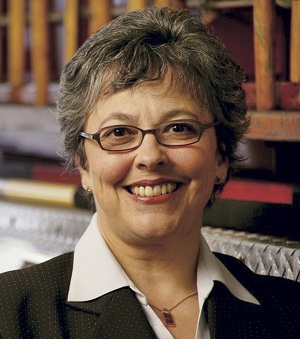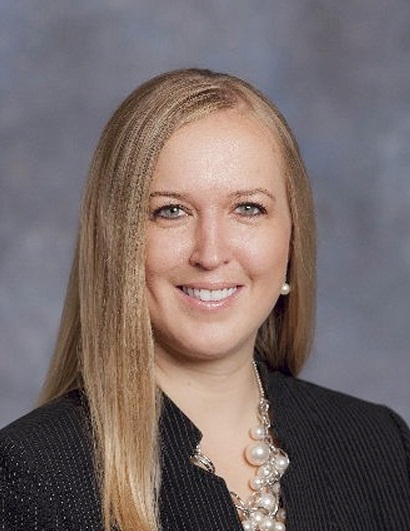At any credit union, the role of the chief financial officer is a tough one. He or she must create a roadmap to financial success by setting the right pricing strategy, effectively managing credit risk and streamlining operational costs. But in California, where high unemployment, an unsteady housing market and loan losses became a standard over the past few years, developing a strategy for the long-term growth of a credit union has been especially hard.
The California credit union chief financial officer's job continues to be a difficult one in 2012, said Diana Dykstra,  president/CEO for the California and Nevada Credit Union Leagues. At the end of 2011, credit unions in California saw increases in net income, membership and net worth ratios but suffered from loan portfolio challenges. Dykstra said, those trends are continuing, with evidence of growth in assets and shares coupled with contracting loan portfolios.
president/CEO for the California and Nevada Credit Union Leagues. At the end of 2011, credit unions in California saw increases in net income, membership and net worth ratios but suffered from loan portfolio challenges. Dykstra said, those trends are continuing, with evidence of growth in assets and shares coupled with contracting loan portfolios.
Financial officers in the state have faced the challenge of working in a low interest rate environment alongside a housing market that's “squishy,” Dykstra said. Their key difficulties have included determining which loans they should hang onto and what to do with excess liquidity in an industry where investment opportunities are limited. Additionally, California credit unions haven't enjoyed the luxury of credit card and auto loan upticks, which credit unions in a number of other states have seen.
“CFOs have to be aware of where the rates are going,” Dykstra said. “They've learned a lot over the past four years. They've kept an eye on operating expenses, and they should continue that, but there has to be some spending, too. They also need to look at alternative income sources.”
When a California credit union hires a new chief financial officer from a state that's healthier economically, the incoming executive must prepare new executive for a whole new set of challenges. For example, the $5.7 billion, San Diego-based San Diego County Credit Union recently chose Ashlee Micale, the former chief financial officer for Denver's $1.2 billion Public Service Credit Union, as its new chief financial officer and executive vice president. Micale said it's critical to understand local market trends and opportunities, especially in California, which has faced more extreme economic conditions than other parts of the country have.
In her new home state, Micale said she plans to zero in on operational details at San Diego County CU, while keeping in mind the credit union's big-picture goals of long-term financial success and strong member service.
“I plan to bring an expanded focus on internal efficiencies and effective reporting and analysis that will bring value to the organization,” Micale said. “I will maintain strong controls and constantly improve operations to better position San Diego County CU for future growth.”
Her primary responsibilities will include monitoring key financial ratios and overseeing the operations of the credit union's accounting, finance and credit risk analysis areas. Compared to her position in Colorado, she'll have the opportunity to contribute to the credit union on a deeper, more strategic level, she said.
Entering a chief financial officer role in the Golden State is a challenge for newcomers, but even the officers who have worked at California credit unions for decades have had to make tweaks to their job priorities in recent years. Patelco Credit Union CFO Scott Waite, Credit Union Times' 2010 CFO of the Year and who has been with the $3.7 billion  credit union for 18 years, said it's equally important for California credit union financial officers to work on shaping core business as it is for them to manage credit risk.
credit union for 18 years, said it's equally important for California credit union financial officers to work on shaping core business as it is for them to manage credit risk.
“It's been very challenging,” he said. “A lot of credit unions in California suffered larger credit losses because of the economic and financial crisis of the last three years, and we've been placing a lot of focus on understanding what we need to do to make sure our financial performance doesn't start slipping backward.”
In his core business building strategy, Waite has focused on two areas, core earnings and efficiency ratio. Patelco CU's efficiency ratio is at 52%, which means the credit union gains $1 for every $0.52 it spends on operations. The credit union has also seen a net income of $23 million for the first five months of 2012, $10 million more than its net income during the first five months of 2011.
What moves led to Patelco CU's promising status? Waite said the credit union has taken greater fiscal responsibility since implementing a new financial budgeting and reporting system. He's also focused on being the kind of leader whose philosophies are put into practice by the managers of the credit union's various departments. He also cut operating costs by renegotiating contracts and leases at some of Patelco CU's branches.
“It's not just about credit risk management and mitigation of loans,” Waite said. “I've continued to look throughout the organization. I've seen my share of California's ups and downs, and one thing I focus on is a clock with a pendulum in my office that I've had for 25 years. It reminds me that there's an equilibrium of balance to attain.”
Waite, who has been an active credit union industry leader at the national level as chairman of the National CUNA CFO Council, co-founder of the California Credit Union League CFO Network and a member of the Advisory Council of the Financial Accounting Standards Board, suggests California credit union chief financial officers exchange strategic ideas with other credit unions nationally to help them broaden their perspectives and stay on top of their competition.
But despite putting the most innovative strategies into practice, California credit union financial officers will continue to face the challenge of having less to work with, as Dykstra pointed out.
“We will continue to live in a very narrow margin for a long time, and living within a narrow margin is getting harder and harder,” Dykstra said. “We're seeing good returns on assets, but we're not seeing operational gains.”
© Touchpoint Markets, All Rights Reserved. Request academic re-use from www.copyright.com. All other uses, submit a request to [email protected]. For more inforrmation visit Asset & Logo Licensing.







